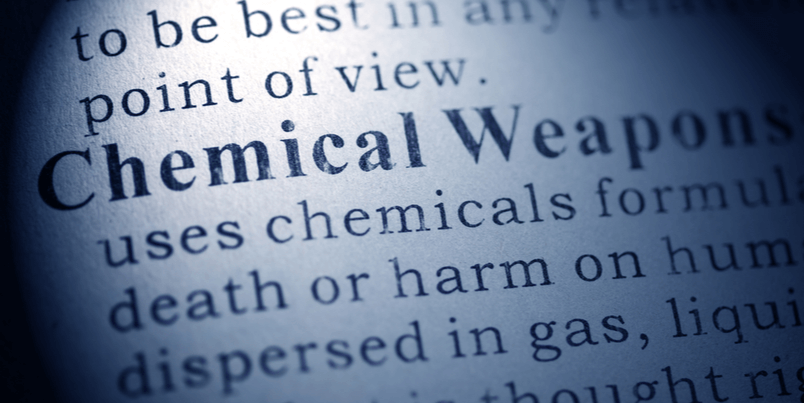 Maintaining combat readiness is a vital requirement for military personnel who are deployed to potentially environments where there is risk of exposure to chemical warfare agents (CWAs) or toxic industrial chemicals (TICs).
Maintaining combat readiness is a vital requirement for military personnel who are deployed to potentially environments where there is risk of exposure to chemical warfare agents (CWAs) or toxic industrial chemicals (TICs).
The development, production and use of chemical weapons continues to remain a significant global concern, due in no small part to the wide availability of the active substances that are used to create them and the relative ease with which the methods or recipes for CWA production can be obtained and shared online.
In a January 2021 briefing to the UN Security Council, the High Representative for Disarmament Affairs, Izumi Nakamitsu, highlighted what she described as “gaps, inconsistencies and discrepancies” that bring into question the true extent of the elimination of the Syrian Arab Republic’s chemical weapons programme.
“There is no justification for the use of chemical weapons by anyone, anywhere and under any circumstances," Nakumitsu said.
“The use of such weapons with impunity and without accountability is a threat to international peace and security and a danger to us all.”
The physical properties of CWAs
CWAs are highly toxic, fast acting and often imperceptible to the senses. Exposure is normally via one or more of the following routes - the skin, the eyes, the respiratory tract or the mucous membranes.
Liquid forms of CWAS tend to be absorbed more often via skin through direct exposure to a contaminated surface, while vapors pose a greater risk of being absorbed through inhalation.
The effects of CWA exposure can be immediate or delayed depending on the type of agent used, the means of exposure, the duration of the exposure, the concentration of the agent, the rate of action and the degree of personal protection that is adopted.
Detecting early chemical exposure
The ever-present risk of chemical exposure on the battlefield is a challenge that is driving research and development into a new wearable technology capability that aims to provide early warning, keep users safe and support the completion of the mission.
The Detecting Indicators of Chemical Exposure (DICE) project is a government-industry initiative that combines the expertise of the US Defense Threat Reduction Agency’s Chemical and Biological Technologies Department (DTRA, CB) and California-based medical technology company PercuSense.
The project has set out to develop a wearable, health-monitoring capability that will proactively monitor the user’s vital signs and physiological markers and provide instant notification of personal exposure to CWAs.
The DICE integrated detection system aims to combine two crucial but currently disparate elements - the monitoring of the battlefield environment and the monitoring of chemical changes that are taking place within the body in real-time.
Preliminary data is currently being gathered on the feasibility, performance and benefits of the wearable chemical sensor, with the hope that it can be used to both enhance short-term risk management and to minimize long-term physiological effects of chemical exposure in battlefield environments.
Hands-on CWA training capability
Alongside the monitoring of personal chemical exposure in the battlefield environment, hands-on training against the hazards of CWAs and TICs is another essential element that can aid operational readiness.
Argon Electronics’ range of chemical warfare training simulators makes it possible for instructors to create highly realistic, compelling and engaging training scenarios that enable trainees to use their detector equipment just as they will in live operations.
The high degree of interactivity, functionality and accuracy of the simulators has been hugely enhanced by Argon’s long standing relationships with leading international detector manufacturers, including Smiths Detection, Mirion / Canberra, Proengin, Thermo Scientific, Environics and Bruker Daltonics.
Safe CWA training in any scenario
A key factor in enhancing the realism of the simulator systems is the ability that they provide for users to train against safe electronic sources that simulate chemical vapors, TICs and false positives.
When training with the LCD3.3 Simulator for the Smiths Detection LCD3.3 for example, instructors are able to set up training scenarios in any location without risk to personal health, public safety or the environment.
Within these highly-realistic chemical training scenarios, trainees have the opportunity to safely and confidently practice their skills in the set-up and use of their detector equipment.
They can also test their understanding of the principles of contamination, decontamination and persistency and the effects of temperature and wind direction.
Multi-detector and multi-substance training
The LCD3.3-SIM is compatible with a wide range of other Argon simulators including the AP2C-SIM, AP4C-SIM, CAMSIM, LCD3.3-SIM, RAID-M100-SIM and CP100i-SIM, making it possible to conduct multi-detector, multi-substance training within the same training scenario.
The simulator works on the identical commercial battery supply as the actual LCD3.3 detector, it requires no preventative maintenance and it minimizes the use of spares.
The risk of costly damage to actual detectors is also completely avoided which ensures that the operational readiness of key equipment is always maintained.
Hands-on training with simulator detector systems provides the means for trainees to experience the hazards, challenges and complexities of CWAs in completely safe environment.
If you would like to learn more about how simulator detectors can help to support and improve your existing CBRN program of instruction, please register to join one of our live online product demonstrations detailed below.






